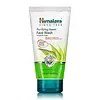What's inside
What's inside
 Key Ingredients
Key Ingredients

 Benefits
Benefits

 Concerns
Concerns

 Ingredients Side-by-side
Ingredients Side-by-side

Allantoin
Skin ConditioningAloe Barbadensis Leaf Extract
EmollientWater
Skin ConditioningSodium Laureth Sulfate
CleansingCocamidopropyl Betaine
CleansingPropylene Glycol
HumectantSodium Lauroyl Sarcosinate
CleansingSodium Chloride
MaskingDecyl Glucoside
CleansingPEG-120 Methyl Glucose Dioleate
EmulsifyingAcrylates Copolymer
PEG-3 Distearate
EmulsifyingZinc Gluconate
Skin ConditioningSalicylic Acid
MaskingDMDM Hydantoin
PreservativeParfum
MaskingTriethanolamine
BufferingDisodium EDTA
Allantoin, Aloe Barbadensis Leaf Extract, Water, Sodium Laureth Sulfate, Cocamidopropyl Betaine, Propylene Glycol, Sodium Lauroyl Sarcosinate, Sodium Chloride, Decyl Glucoside, PEG-120 Methyl Glucose Dioleate, Acrylates Copolymer, PEG-3 Distearate, Zinc Gluconate, Salicylic Acid, DMDM Hydantoin, Parfum, Triethanolamine, Disodium EDTA
Water
Skin ConditioningAmmonium Lauryl Sulfate
CleansingMelia Azadirachta Leaf Extract
Skin ConditioningCocamidopropyl Betaine
CleansingSodium Cocoyl Glutamate
CleansingGlycerin
HumectantAcrylates/C10-30 Alkyl Acrylate Crosspolymer
Emulsion StabilisingCurcuma Longa Root Extract
MaskingSodium Hydroxide
BufferingPhenoxyethanol
PreservativeParfum
MaskingMethylchloroisothiazolinone
PreservativeSodium Metabisulfite
AntioxidantCitric Acid
BufferingDisodium EDTA
Tocopheryl Acetate
AntioxidantCI 47005
Cosmetic ColorantBlue 1 Lake
Cosmetic ColorantWater, Ammonium Lauryl Sulfate, Melia Azadirachta Leaf Extract, Cocamidopropyl Betaine, Sodium Cocoyl Glutamate, Glycerin, Acrylates/C10-30 Alkyl Acrylate Crosspolymer, Curcuma Longa Root Extract, Sodium Hydroxide, Phenoxyethanol, Parfum, Methylchloroisothiazolinone, Sodium Metabisulfite, Citric Acid, Disodium EDTA, Tocopheryl Acetate, CI 47005, Blue 1 Lake
 Reviews
Reviews

Ingredients Explained
These ingredients are found in both products.
Ingredients higher up in an ingredient list are typically present in a larger amount.
Cocamidopropyl Betaine is a fatty acid created by mixing similar compounds in coconut oil and dimethylaminopropylamine, a compound with two amino groups.
This ingredient is a surfactant and cleanser. It helps gather the dirt, pollutants, and other impurities in your skin to be washed away. It also helps thicken a product and make the texture more creamy.
Being created from coconut oil means Cocamidopropyl Betaine is hydrating for the skin.
While Cocamidopropyl Betaine was believed to be an allergen, a study from 2012 disproved this. It found two compounds in unpure Cocamidopropyl Betaine to be the irritants: aminoamide and 3-dimethylaminopropylamine. High-grade and pure Cocamidopropyl Betaine did not induce allergic reactions during this study.
Learn more about Cocamidopropyl BetaineDisodium EDTA plays a role in making products more stable by aiding other preservatives.
It is a chelating agent, meaning it neutralizes metal ions that may be found in a product.
Disodium EDTA is a salt of edetic acid and is found to be safe in cosmetic ingredients.
Learn more about Disodium EDTAParfum is a catch-all term for an ingredient or more that is used to give a scent to products.
Also called "fragrance", this ingredient can be a blend of hundreds of chemicals or plant oils. This means every product with "fragrance" or "parfum" in the ingredients list is a different mixture.
For instance, Habanolide is a proprietary trade name for a specific aroma chemical. When used as a fragrance ingredient in cosmetics, most aroma chemicals fall under the broad labeling category of “FRAGRANCE” or “PARFUM” according to EU and US regulations.
The term 'parfum' or 'fragrance' is not regulated in many countries. In many cases, it is up to the brand to define this term.
For instance, many brands choose to label themselves as "fragrance-free" because they are not using synthetic fragrances. However, their products may still contain ingredients such as essential oils that are considered a fragrance by INCI standards.
One example is Calendula flower extract. Calendula is an essential oil that still imparts a scent or 'fragrance'.
Depending on the blend, the ingredients in the mixture can cause allergies and sensitivities on the skin. Some ingredients that are known EU allergens include linalool and citronellol.
Parfum can also be used to mask or cover an unpleasant scent.
The bottom line is: not all fragrances/parfum/ingredients are created equally. If you are worried about fragrances, we recommend taking a closer look at an ingredient. And of course, we always recommend speaking with a professional.
Learn more about ParfumWater. It's the most common cosmetic ingredient of all. You'll usually see it at the top of ingredient lists, meaning that it makes up the largest part of the product.
So why is it so popular? Water most often acts as a solvent - this means that it helps dissolve other ingredients into the formulation.
You'll also recognize water as that liquid we all need to stay alive. If you see this, drink a glass of water. Stay hydrated!
Learn more about Water